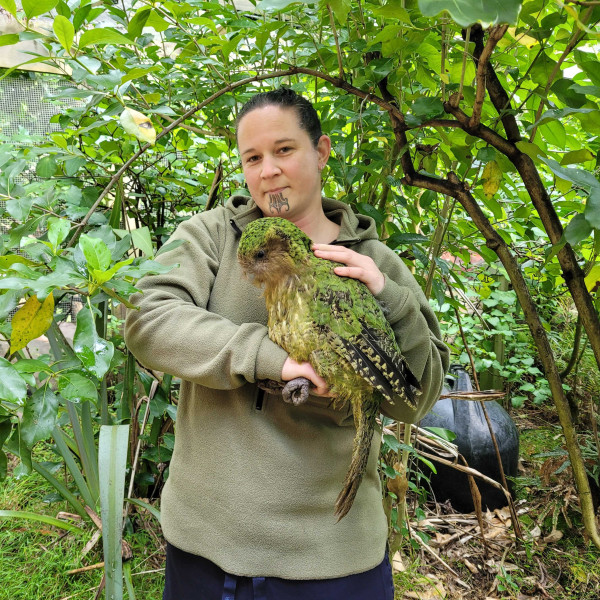Bringing our taonga home
Aug 21, 2024
When Brae Forrester (Waitaha, Kāti Mamoe, Kāi Tahu, Ngati Pōrou) was offered the opportunity to represent Awarua Rūnaka on a mission to bring kākāpō home from Te Hauturu-o-Toi/Little Barrier Island she agreed immediately.
Kākāpō were reintroduced to Hauturu in 2012 as part of a trial to see if they could thrive there without support. Unfortunately, after more than a decade, the manu have not been able to successfully raise chicks on their own on the motu without supplementary feeding. For this reason, the decision has been made to relocate all remaining monitored kākāpō from Hauturu to Pukenui/Anchor Island in Tamatea/Dusky Sound.
“I had never heard anything about Hauturu/Little Barrier Island, so I did a lot of research about it beforehand – the scale of work that is undertaken on the motu is very special,” Brae says.
During the time kākāpō have been present on Hauturu they have been under the care and protection of the local iwi, Ngāti Manuhiri.
Ngāi Tahu Representative on the Kākāpō Recovery Group Tāne Davis says that having Ngāti Manuhiri take on kaitiaki responsibilities for these manu while they were on Hauturu was highly significant and has strengthened the iwi ki te iwi connection.
Brae says that although she was briefed in advance about the plan for retrieving the kākāpō she was not fully prepared for the physicality of the endeavour.
“It was extremely physical, bashing your way through very dense native forest in somewhat terrible conditions in the rain,” she says.
“I was very excited that we managed to capture two of the manu and I watched in awe as the Department of Conservation (DOC) team worked their magic with the birds,” Brae says.
“I could see that the DOC kaimahi really cared for the kākāpō and had a deep passion for the work they are doing.
“I was a little bit emotional seeing kākāpō live for the first time and knowing that these taonga were coming back home.”
Brae and Tāne flew in a helicopter from the motu back to Auckland with the two kākāpō, Ox and Wendy.
Ox was discovered on Rakiura in 1982 and was transferred to Hauturu from Whenua Hou in April 2012. Wendy hatched on Rakiura in February 1981, which means she is now 43 years old. Wendy was transferred to Hauturu from Whenua Hou in July 2017.

Photo by Daryl Eason (DOC): Brae pictured with Ox on Hauturu as she helps transfer him into his transportation carrier ready for his helicopter ride to Auckland Zoo
Ox and Wendy stayed overnight at Auckland Zoo where they received health checks before being flown to Invercargill accompanied by Brae, Tāne and representatives of Ngāti Manuhiri.
“It was important for Ngāti Manuhiri to bring their own mauri with them and to ensure that the kākāpō arrived back to Te Rua o te Moko/Fiordland safely,” Tāne says.
“Once we arrived on Pukenui/Anchor Island, we walked together into the ngahere and released the manu while the DOC team were setting up the transmitter aerials.
“It was pretty empowering,” he says.
This was Brae’s first opportunity to interact with kākāpō and the first time she had travelled to Ika-a-Māui/the North Island. Brae says that the experience has inspired her to want to be involved in conservation mahi in the future, as a kaitiaki or a taonga species representative.